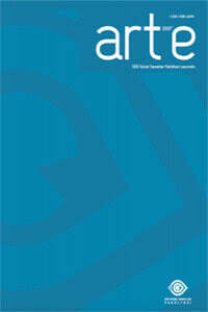Yeni Bir İlişkisellik Kipi: Bersani ve Dutoit’in Caravaggio’su
Bu makale Leo Bersani ve Ulysee Dutoit’in, ünlü İtalyan ressam Michalengelo Merisi da Caravaggio’nun resimlerinin yeni bir ilişkisellik taşıdığı yönündeki ilgi çekici iddiasına odaklanmaktadır. Bersani ve Dutoit, birlikte kaleme aldıkları Caravaggio’nun Sırları (Caravaggio’s Secrets) adlı kitapta bu radikal sanatçının eserlerini psikanalitik yaklaşıma karşıt şekilde antropomorfik olmayan bir perspektifle analiz eder. Onların titiz çalışmasında Caravaggio, benliği ve benliğin sosyallikle olan bağını öyle eşsiz şekilde resmeden bir ustaya dönüşür ki resimleri görülmemiş bir ilişkiselliği sunmanın yanı sıra yeni bir sosyallik kipini de öngörür. Bu çalışma Bersani ve Dutoit’in iddialarını Caravaggio’nun resimlerindeki üç önemli nosyon olan talepkar bakış, merkezi odak nosyonu ve ilişkisellik bağlamında yeniden ele alacaktır.
A New Mode of Relationality: Bersani and Dutoit's Caravaggio
This paper shall focus on Leo Bersani and Ulysse Dutoit’s intriguing claim that famous Italian artist Michalengelo Merisi da Caravaggio’s paintings address a new mode of relationality. In their co-authored book Caravaggio’s Secrets, Bersani and Dutoit analyze the works of this radical artist from a non-anthropomorphized perspective in opposition to a psychoanalytical approach. In their meticulous study, Caravaggio became a master who depicts the subjects and their nexus to the surroundings in such a unique way that his paintings foresee new modes of sociality along with an unfamiliar relationality they present. The present study revisits Bersani and Dutoit’s contentions by focusing on the three significant aspects of Caravaggio’s paintings namely the soliciting gaze, the notion of center and the relationality in the paintings.
Keywords:
Caravaggio, Relationality, Soliciting Gaze Notion of Centrality,
___
- Bernstein, J. M. (2013). “Forgetting Isaac: Faith and the Impossibility of a Postsecular Society” in Craig Calhoun, Eduardo Mendietta, Jonathan VanAntwerpen (eds.) Habermas and Religion. Polity, p. 154-175.
- Bersani, L. (1990). The Freudian Body, New York: Columbia University Press.
- Bersani, L. and Dutoit, U. (1990). The Culture of Redemption, London: Harvard University Press.
- Bersani, L. and Dutoit, U. (1998). Caravaggio’s Secrets, Cambridge, MA: MIT Press.
- Bersani, L. and Dutoit, U. (2003). “Caravaggio's Secrets”, in Aesthetic Subjects, eds. Pamela R. Matthews and David McWhirter, Minneapolis: University of Minnesota Press, p.99-124.
- Hibbard, H. (1983). Caravaggio, New York: Harper and Row Publishing.
- Hinks, R. (1953). Michelangelo Merisi da Caravaggio: His Life, His Legend, His Work, London: Faber & Faber.
- Lambert, G. (2000). Caravaggio, Cologne: Taschen.
- Posner, D. (1971). “Caravaggio’s Homo-erotic Early Works”, Art Quarterly, Vol 34, p.301–24.
- Silverman, K.; Dean, T.; Foster, H.; Bersani, L. (1997). “A Conversation with Leo Bersani”, October, Vol 82, Autumn, p.3-16.
- Tuhkanen, M. (2002). "Becoming Same: Bersani and Deleuze”, Umbr(a): Sameness, No 1, p.131- 45.
- Warwick, G. (2006). “Introduction: Caravaggio in History” in Caravaggio: Realism, Rebellion, Reception, ed. Genevieve Warwick, Daleware: University of Daleware Press, p.13-22.
- Online Sources
- National Gallery Glossary, https://www.nationalgallery.org.uk/paintings/glossary/chiaroscuro. Date accesst: 31.03.2018. Visual Sources
- Image 1. Caravaggio, “The Fortune Teller”, 1593–94, oil on canvas, Pinacoteca Capitolina https://commons.wikimedia.org/wiki/Category:Google_Art_Project_works_by_Caravaggio#/m edia/File:Caravaggio_(Michelangelo_Merisi)_-_Good_Luck_-_Google_Art_Project.jpg. Date accesst: 05.05.2019.
- Image 2. Caravaggio, “The Calling of St. Matthew”, 1599-1600, oil on canvas, Contarelli Chapel, Rome.https://en.wikipedia.org/wiki/The_Calling_of_St_Matthew_(Caravaggio)#/media/File:Th e_Calling_of_Saint_Matthew-Caravaggo_(1599-1600).jpg. Date Accesst: 27.05.2018.
- Image 3. Caravaggio, “Supper at Emmaus”, 1601, oil and tempera on canvas, National Gallery, London.https://en.wikipedia.org/wiki/Supper_at_Emmaus_(Caravaggio,_London)#/media/File: 1602-3_Caravaggio,Supper_at_Emmaus_National_Gallery,_London.jpg. Date accesst: 27.05.2018.
- Image 4. Caravaggio, “Judith Beheading Holofernes, 1598-9, oil on canvas, Palazzo Barberini, Rome.https://www.khanacademy.org/humanities/monarchy-enlightenment/baroqueart1/baroque-italy/a/gentileschi-judith-slaying-holofernes. Date accesst: 03.01.2019.
- Image 5. Caravaggio, “Bacchino Malato (Sick Bacchus)”, 1593, oil on canvas, Gallery Borghese, Rome.https://it.wikipedia.org/wiki/Bacchino_malato#/media/File:Bacchino_malato_(Caravaggi o).jpg. Date accesst: 27.05.2018.
- Yayın Aralığı: Yılda 2 Sayı
- Başlangıç: 2008
- Yayıncı: Süleyman Demirel Üniversitesi Güzel Sanatlar Fakültesi
Sayıdaki Diğer Makaleler
Müzikal Deşifrenin Boyutları ve Etken Faktörleri
Moda Tasarımı Eğitiminde Sürdürülebilirlik Üzerine Yaklaşımlar
Koro Eğitimi ve Performansında Soundpainting Yaklaşımı
Antik Dönemde Oturma Mobilyasının Öyküsü ve Tarihsel Süreçteki Yansımaları
Mimarlık Kuramlarında Değişen Estetik Yaklaşımları Yeniden Düşünmek
Tarık Emre KIRHALLI, Rifat Gökhan KOÇYİĞİT
OSMANLI YAZMA ESERLERİNDE MURASSA (MÜCEVHERLİ) KİTAP KAPLARI
Bozüyük Kasım Paşa Camii Süsleme Programı
Türk Halı Sanatının Kompozisyon ve Desenlerinde Miktar Kavramı
Temel Tasarım Eğitiminde Bauhaus Okulu'nun Mekan Üretimine Etkisi
